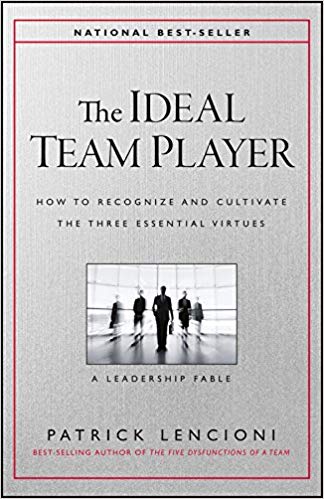
If you live in a graveyard too long you stop crying when someone dies. – Anon.
In addition to Mt. Rushmore, one of Gutzon Borglum’s great works as a sculptor is the head of Lincoln in the Capitol at Washington. He cut it from a large, square block of stone in his studio. One day, when the face of Lincoln was just becoming recognizable out of the stone, a young girl was visiting the studio with her parents. She looked at the half-done face of Lincoln, her eyes registering wonder and astonishment. She stared at the piece for a moment then ran to the sculptor. “Is that Abraham Lincoln?” she asked. “Yes.” “Well,” said the little girl, “how in the world did you know he was inside there?”
The question posed by that young girl is an appropriate one for the likes of sculptor Gutzon Borglum. His work is rightfully critiqued by the product he produces.
What about you? How would an outsider look upon your leadership and what observations would they make? What inward image do you project? The truth is: what’s on the inside will come out. It always does.
I’m at the age where it could be very easy to be cynical or calloused in my thinking. And quite honestly, some days it’s a challenge. Hang around in leadership long enough and you can get to the place where you have seen it all, heard it all, and there’s just not much that shocks you anymore. Can you relate?
Studies have shown that those in their first year in a new job are among the happiest in the organization. Contrast that with more tenured employees and you will find vastly different attitudes and opinions.
So how do you retain a healthy perspective as a leader and not become so calloused that you are no longer effective? It’s a challenge we all struggle with. Here are a few tips for your consideration.
Watch your attitude
Your attitude will make you or break you. It always has and it always will. You can come to a place over time that you feel no one is listening, no one wants to improve or change, and that there’s just no reason to be optimistic. Can you relate? This way of thinking can cause your attitude to sour and your leadership to be ineffective.
If you are going to thrive as a leader you must watch your attitude and remember that you are not responsible for other people’s attitudes and actions. You are only accountable for one. Yours. Guard your attitude at all costs. Click To TweetBe intentional about your inner circle
In as much as a bad attitude can be disastrous for you as a leader, so too can an inner circle filled with the wrong people. I absolutely believe that you need diversity in your circle. You need people who will inspire you, challenge you, question you, and bring out the best in you. It’s the sign of a smart and thriving leader. We all need people around us – younger and older – who see the world differently from us. But you don’t need the wrong people.
As a leader, you don’t need people with bad attitudes who bring drama; who are unwilling to change, are afraid to take risks, who protect the status quo, and who are afraid to speak the truth.If you want to thrive as a leader then you must be intentional and selective about your inner circle. Click To Tweet
Hold yourself accountable
We live in a world where cynicism and divisions run deep. As leaders, it can be easy to get sucked into all the negativity that surrounds us on a daily basis. We need trusted friends and advisors around us who can hold us accountable for wrong attitudes, actions, words, and behaviors. Click To Tweet The truth is, we all have blind spots and we need the help. I know I do.
Leadership is a marathon, not a 100-yard dash. So on your journey, keep your attitude strong, be intentional about your inner circle, and hold yourself accountable. You will be a better leader for it and your influence as a leader will be worth emulating.
©2019 Doug Dickerson










 Elizabeth Stincelli is the CEO of Stincelli Advisors. Learn more about Elizabeth by visiting her website at stincelliadvisors.com
Elizabeth Stincelli is the CEO of Stincelli Advisors. Learn more about Elizabeth by visiting her website at stincelliadvisors.com